 |
 |
 |
| |
Liver Cancer Rate Rising Since 1996 in North Americans With HIV
|
| |
| |
CROI 2020, March 8-11, 2020, Boston
Mark Mascolini
Incidence of hepatocellular carcinoma (HCC) has climbed among HIV-positive North Americans since 1996--the year combination antiretroviral therapy arrived [1]. This 109,000-person analysis found that a detectable HIV load, lower CD4 count, and hepatitis virus coinfection all boosted HCC risk.
The NA-ACCORD collaboration includes over 20 cohorts at more than 200 sites across the United States and Canada. This analysis covered the years from January 1996 through December 2015 and included 109,283 people, 85% of them men, 41% white, 41% black, and 93% from US cohorts. Of the 451 HCC cases recorded in that period, 97% involved men, 35% whites, 49% blacks, and 98% US residents.
Researchers used Poisson regression models to estimate HCC incidence (new-diagnosis rate) and incidence rate ratio (the ratio of two incidence rates).
Comparing the 108,832 people without HCC to the 451 with HCC, the NA-ACCORD team found that the HCC group had an older median age (51 versus 43), a lower proportion with HIV without a hepatitis virus (HBV or HCV) (8% versus 71%), a lower proportion of men who have sex with men (12% versus 33%), a lower proportion of heterosexuals (3% versus 15%), and a higher proportion of people who inject drugs (47% versus 19%).
HCC incidence (new cases per 1000 person-years) nearly tripled across three antiretroviral treatment eras, climbing from 0.28 (95% confidence interval [CI] 0.17 to 0.46) in 1996-2000, to 0.43 (95% CI 0.35 to 0.53) in 2001-2005, and to 0.75 (95% CI 0.68 to 0.84) in 2006-2015 (adjusted incidence rate ratio 1.72, 95% CI 1.03 to 2.87). Across those three periods, HCC incidence rate ratios (IRR) showed the increasing importance of hepatitis coinfection:
1996-2000
HIV/HBV incidence vs HIV alone: IRR 15.4 (95% CI 4.3 to 55.5)
HIV/HCV incidence vs HIV alone: IRR 2.3 (95% CI 0.6 to 9.1)
HIV/HBV/HCV incidence vs HIV alone: IRR 4.9 (95% CI 0.5 to 45.8)
2001-2006
HIV/HBV incidence vs HIV alone: IRR 25.4 (95% CI 10.7 to 60.7)
HIV/HCV incidence vs HIV alone: IRR 18.2 (95% CI 8.3 to 40.4)
HIV/HBV/HCV incidence vs HIV alone: IRR 6.6 (95% CI 1.4 to 32.1)
2007-2015
HIV/HBV incidence vs HIV alone: IRR 23.7 (95% CI 14.9 to 37.9)
HIV/HCV incidence vs HIV alone: IRR 23.8 (95% CI 15.8 to 35.9)
HIV/HBV/HCV incidence vs HIV alone: IRR 45.7 (95% CI 27.7 to 75.5)
Analysis of HIV viral load measured about 2 years before HCC diagnosis determined that a load at or above 500 copies almost doubled HCC risk compared with a lower load (adjusted incidence rate ratio [aIRR] 1.8, 95% CI 1.4 to 2.4). A CD4 count at or below 500 cells measured close to study entry date raised HCC risk 30% compared with a higher CD4 count (aIRR 1.3, 95% CI 1.0 to 1.6).
People who inject drugs had more than a 4-fold higher risk of HCC than MSM (95% CI 2.8 to 6). When researchers adjusted that analysis for viral hepatitis coinfection, people who inject drugs had a doubled risk of HCC compared with MSM (95% CI 1.3 to 2.9).
Reference
1. Sun J, Althoff K, Jing Y, et al. Hepatocellular carcinoma risk among persons with HIV in North America, 1996-2015. Conference on Retroviruses and Opportunistic Infections (CROI). March 8-11, 2020. Boston. Abstract 126.
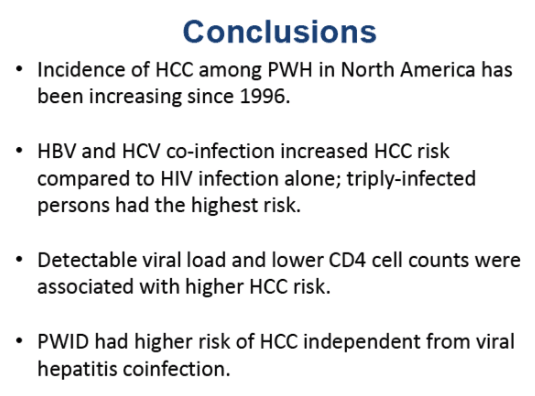
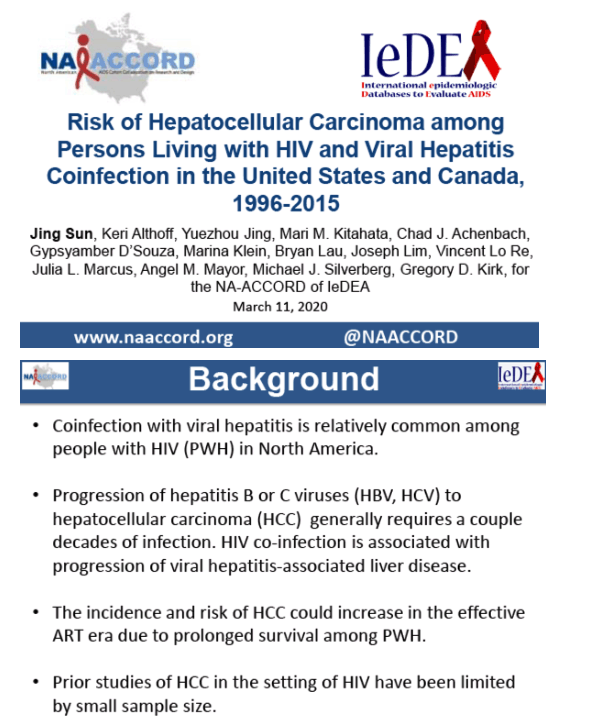
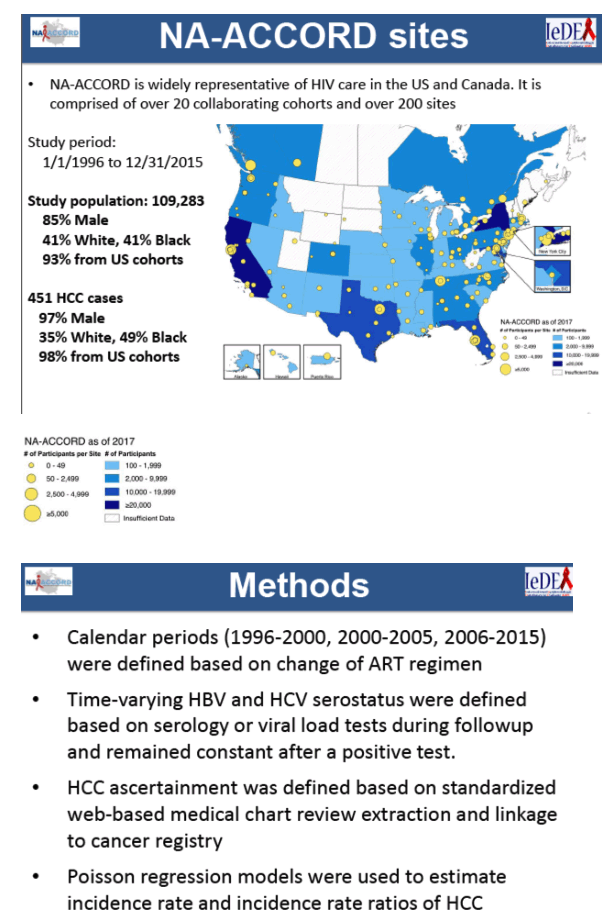
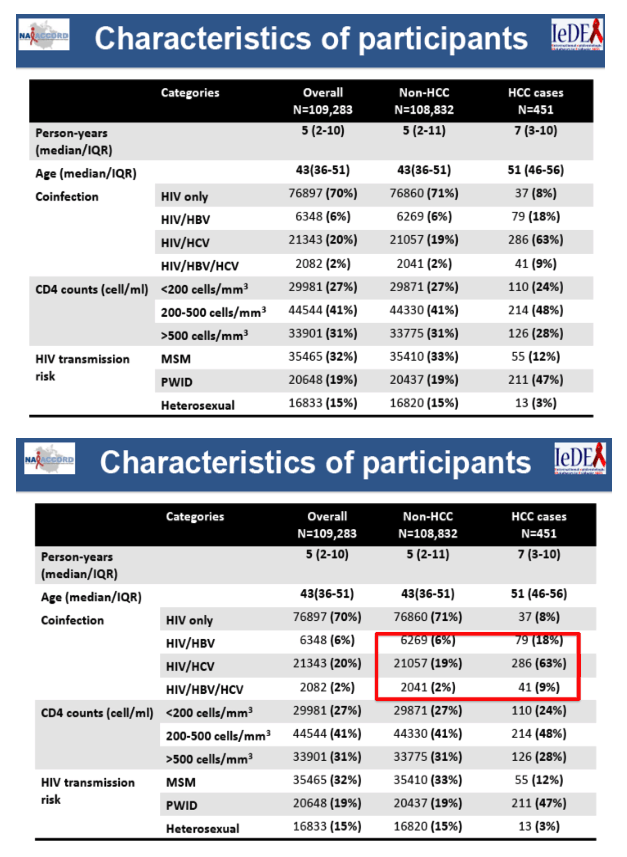

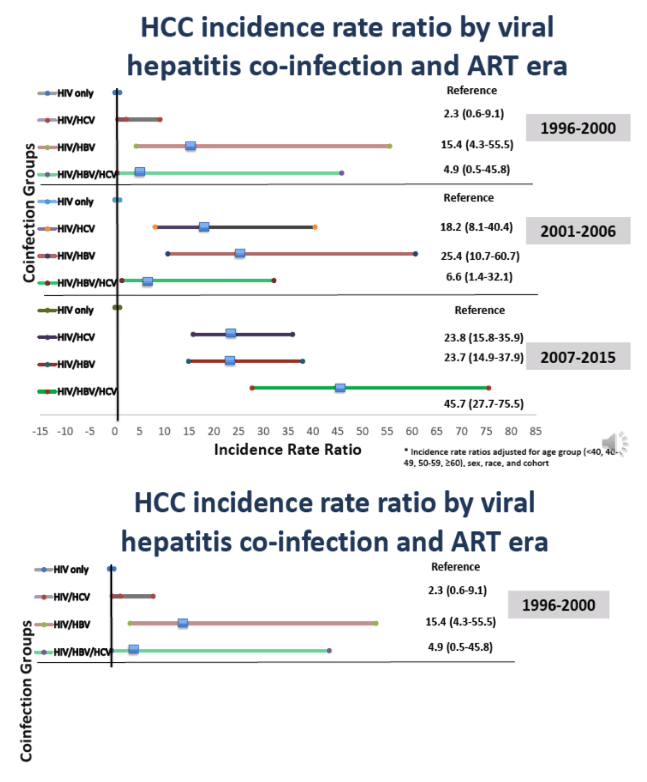
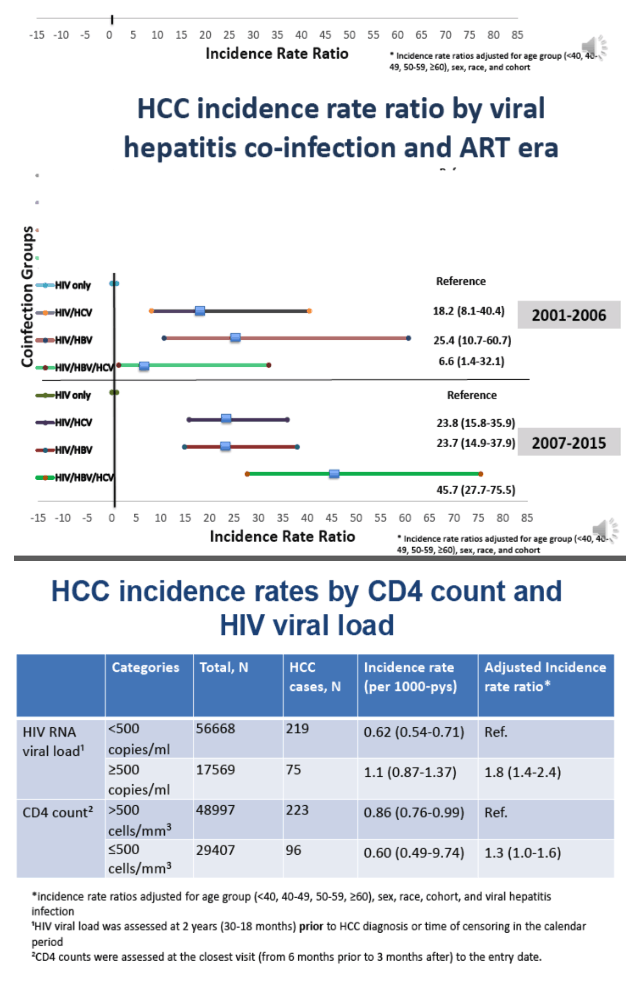
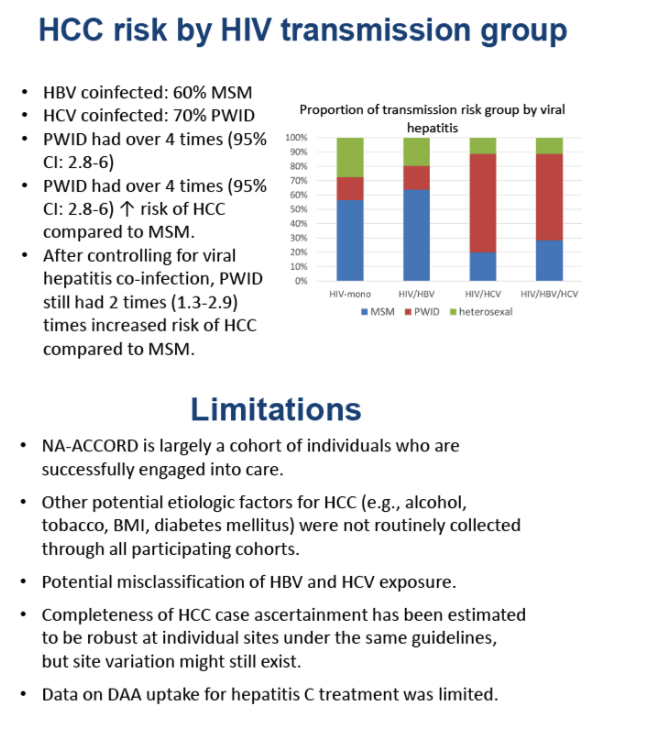
|
| |
|
 |
 |
|
|